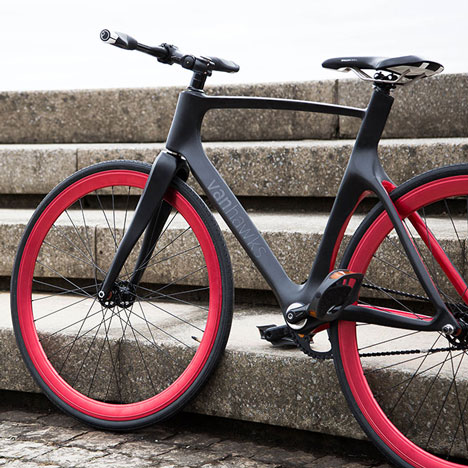
"Smart" bicycle by Vanhawks gives directions with flashing lights and vibrating safety alerts
The Canada-based creators of the Vanhawks Valour claim to have designed the "first smart, connected bicycle", which gives riders directions as well as alerts to prevent them cycling into dangerous situations.
The carbon-fibre-frame bicycle was designed specifically for urban commuters and uses bluetooth to connect to the GPS on a smart phone, relaying turn-by-turn directions to the rider using LEDs built into the handlebars.
The bike also uses ultrasonic sensors to detect objects in a rider's blind spot and sends alerts via vibrating handlebars when it detects a potential threat – a security feature the designers say is an industry first.
"Imagine looking for your blind spot in your rear view mirror, it's exactly the same concept," Vanhawks cofounder Ali Zahid told Dezeen.

"All of us were commuters and we hated riding a s***ty bike that is super unsafe on the road. We created something that we wanted ourselves when we were bikers," said Zahid.
"We started to build the bike up with the commuter in mind, to keep them safe on the road and have a bike that looks sexy."
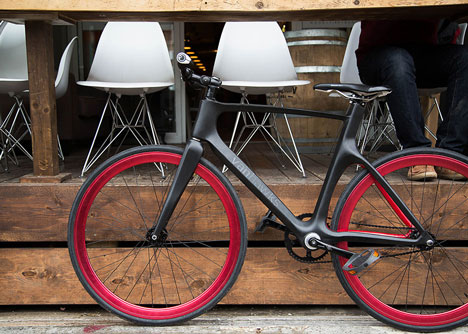
Sensors built into the bike generate real-time ride data – including speed, distance and time – which is then collated in an app which can also track best performances over routes and calculate the number of calories burned.
A dynamo hub on the front wheel charges the in-built electronics, and an hour-long bike ride will fully charge the bike.
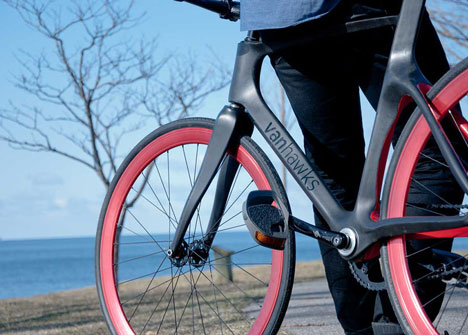
The bike is compatible with iOS and Android phones as well as the Pebble smart-watch. If the device's battery dies it can be synced post-ride.
"If your phone dies your bike still keeps a track of where your going, the route you took and calories burned, but the turn by turn navigation won't work – that relies on your phone," explained Zahid.
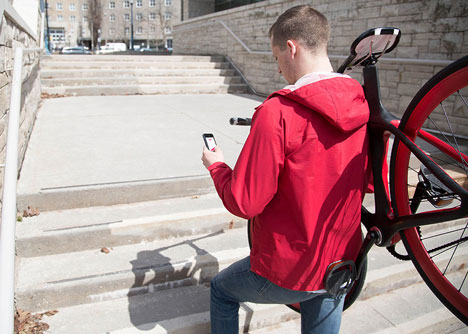
Data collected with a gyroscope, accelerometer and magnetometer picks up any unusually bumpy movement over potholes or rough road surfaces to create a Google Maps overlay that tells subsequent users of the app whether a route is bumpy or smooth.
This data can also be used to show steep hills and the map integrates information on designated cycle lanes and traffic flow. As the numbers of riders goes up and more data is collected, the information in the app will become richer.
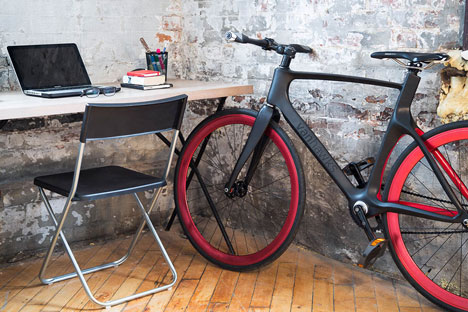
Each bike is connected to a network of other bicycles with a mesh network powered by Vanhawk's servers.
"All the Valours communicate with each other," explained Zahid. "Let's say I lost my bike and I report it stolen on my app, it lets all the other bikes on the network know that the bike is missing."
All the bikes on the network can then search for the missing bike and, if they detect it nearby, relay the location back to Vanhawks and the original owner.

The frame of the bike is made from a carbon fibre material originally developed by one of the Vanhawks founders for UK and Netherlands based hockey stick manufacturer Dita Hockey.
Each bike frame is moulded as a single piece, but instead of creating a hollow frame of the kind commonly used for carbon fibre bikes, the structure features internal walls at stress points for added strength.
This feature is modelled loosely on the structure of human bones and is one of many elements of the design influenced by the medical background of a member of the Vanhawks team who dropped out of a PHD in biodynamics to focus on the project.
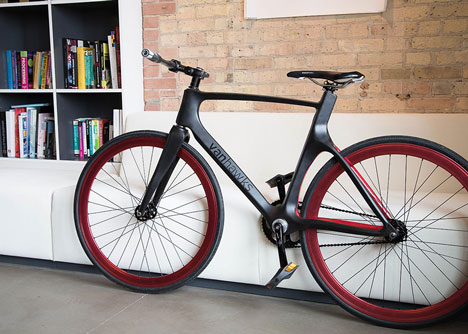
The lightest model of the Valour – a fixed gear bike – weighs just under 16 pounds, while the heaviest model with an internal gear hub weighs under 20 pounds.
The initial prototypes were created using a single size mould and the project has now launched on Kickstarter to enable the team to create the bicycle in multiple sizes and take the design into production.